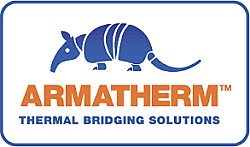08-19-2025

Objectifs d'apprentissage
1. Understand what thermal bridging is and what effect it has in energy loss.
2. Understanding of terminology of heat loss and gain in buildings and how K- values, R- values, and U- values help us select the correct materials and assemblies for the best results.
3. Understand how 3D thermal modeling can help us design better assemblies to mitigate energy loss in transitions. We also discuss areas most affected by thermal bypasses and how to address them in the design phase.
4. Discuss how government and utility incentives can help defray some of the additional cost of the upgrades.
Comments
Thank you!
MichaelVery informative
Naeem Aligreat course
HassanGreat info.
Faisalnone
Wassefgood for general knowledge of thermal breaks.
Paulgood course
michaelGreat!
Ramona VeneraInformative course
Lloydgood info
Tae (a.k.a. Francisco)Well-presented and informative.
DomenicoIncluded a lot of good information. Thermal breaks need to be better evaluated by designers.
KevinGood Presentation
Johnno comments
KOJIgood info
BENThis one was a bit tough to follow. Presenter not being visible would help. He seemed to be doing too many things at once.
DanielExcellent!
Pennygood test
Melaneygreat presentation
Matthewgood
DarwinVery informative.
AlejandroLots of great information and solutions to thermal issues
Jeffreythe presenter was very good and the information very valuable
Robertnice to learn about thermal bridging and what is available to remedy the situation
SowardThe recording of the training did not work. Thanks for the brochure downloads. Good details .
FatemaI thought there were some contradictions in this presentation compared other sources.
Stevengreat
susanexcellent. Especially good graphics
MiltonA lot of content in a short time
NicholasGreat course
Rebeccasection dtls with thermal paths would be helpful
JulianExcellent
DavidN/A
Marcthank you
LindsayGreat presentation on a relevant topic
KyleGreat thank you!
Tonygood
PeterThis was a very informative presentation, I truly enjoyed learning more about the terminology and imagery regarding Thermal Breaks; but would have liked to of learned more about the materials being used as a thermal break as well. Thanks for the presentation!
JamesInteresting Topic.
NiallGood presentation and information provided.
GeorgeTHIS IS A VERY IMPORTANT AND TIMELY TOPIC. IT IS IMFORMATIVE TO KNOW THAT INSULATION ALONE WILL NOT HAVE A GREAT IMPACT ON EBERGY USE IN A BUILDING.
FEMIGreat info.
Rhondan/a
cathleenGreat course!
MarcosAlways beneficial to revisit BE topic.
HalimaVery well presented. Going to certainly influence my next building design!
ChrisVery informative
Jamie LinnGreat information
MollyIt’s very good for designer and has comprehensive content
Taufiq IhsanIt’s very good for designer and has comprehensive content
Taufiq IhsanBuilding Better with Thermal Breaks
GRATUIT
Thermal bridging has been found to adversely affect the heating and cooling of buildings in a significant way. Three dimensional thermal modeling has shown thermal bridging often occurs at predictable structural transitions and that thermal breaks can significantly reduce conductive heat losses in those areas. This course will explain what thermal bridging is, where it occurs, and present strategies to help control it. As we build more efficient buildings that are comfortable and safe, we need to look for better ways to insulate structural transition areas with materials that can bear weight, and insulate.
Crédits: 1 AIA HSW + 1 AIBD Primary + 1 AIBC Core LU + 1 AAA Structured LU + 1 OAA, OAQ, SAA, MAA, AAPEI, NWTAA
Durée: 1 hour
Vous devez être connectez pour prendre ce cours. Veuillez vous connecter ou créer un compte.
Connection OU Création de comte ShareCommandité par


Building Better with Thermal Breaks
GRATUIT
Thermal bridging has been found to adversely affect the heating and cooling of buildings in a significant way. Three dimensional thermal modeling has shown thermal bridging often occurs at predictable structural transitions and that thermal breaks can significantly reduce conductive heat losses in those areas. This course will explain what thermal bridging is, where it occurs, and present strategies to help control it. As we build more efficient buildings that are comfortable and safe, we need to look for better ways to insulate structural transition areas with materials that can bear weight, and insulate.
Crédits: 1 AIA HSW + 1 AIBD Primary + 1 AIBC Core LU + 1 AAA Structured LU + 1 OAA, OAQ, SAA, MAA, AAPEI, NWTAA
Durée: 1 hour
Vous devez être connectez pour prendre ce cours. Veuillez vous connecter ou créer un compte.
Connection OU Création de comteCommandité par

Objectifs d'apprentissage
1. Understand what thermal bridging is and what effect it has in energy loss.
2. Understanding of terminology of heat loss and gain in buildings and how K- values, R- values, and U- values help us select the correct materials and assemblies for the best results.
3. Understand how 3D thermal modeling can help us design better assemblies to mitigate energy loss in transitions. We also discuss areas most affected by thermal bypasses and how to address them in the design phase.
4. Discuss how government and utility incentives can help defray some of the additional cost of the upgrades.
Comments
Thank you!
MichaelVery informative
Naeem Aligreat course
HassanGreat info.
Faisalnone
Wassefgood for general knowledge of thermal breaks.
Paulgood course
michaelGreat!
Ramona VeneraInformative course
Lloydgood info
Tae (a.k.a. Francisco)Well-presented and informative.
DomenicoIncluded a lot of good information. Thermal breaks need to be better evaluated by designers.
KevinGood Presentation
Johnno comments
KOJIgood info
BENThis one was a bit tough to follow. Presenter not being visible would help. He seemed to be doing too many things at once.
DanielExcellent!
Pennygood test
Melaneygreat presentation
Matthewgood
DarwinVery informative.
AlejandroLots of great information and solutions to thermal issues
Jeffreythe presenter was very good and the information very valuable
Robertnice to learn about thermal bridging and what is available to remedy the situation
SowardThe recording of the training did not work. Thanks for the brochure downloads. Good details .
FatemaI thought there were some contradictions in this presentation compared other sources.
Stevengreat
susanexcellent. Especially good graphics
MiltonA lot of content in a short time
NicholasGreat course
Rebeccasection dtls with thermal paths would be helpful
JulianExcellent
DavidN/A
Marcthank you
LindsayGreat presentation on a relevant topic
KyleGreat thank you!
Tonygood
PeterThis was a very informative presentation, I truly enjoyed learning more about the terminology and imagery regarding Thermal Breaks; but would have liked to of learned more about the materials being used as a thermal break as well. Thanks for the presentation!
JamesInteresting Topic.
NiallGood presentation and information provided.
GeorgeTHIS IS A VERY IMPORTANT AND TIMELY TOPIC. IT IS IMFORMATIVE TO KNOW THAT INSULATION ALONE WILL NOT HAVE A GREAT IMPACT ON EBERGY USE IN A BUILDING.
FEMIGreat info.
Rhondan/a
cathleenGreat course!
MarcosAlways beneficial to revisit BE topic.
HalimaVery well presented. Going to certainly influence my next building design!
ChrisVery informative
Jamie LinnGreat information
MollyIt’s very good for designer and has comprehensive content
Taufiq IhsanIt’s very good for designer and has comprehensive content
Taufiq Ihsan


